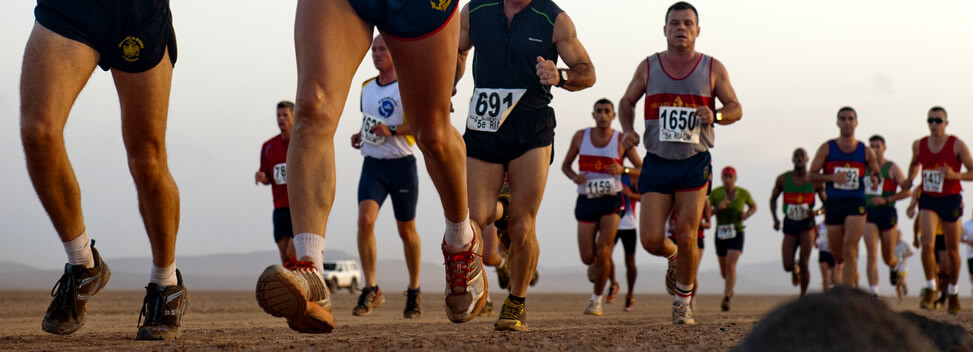How to avoid getting a stitch when exercising
- April 25, 2014
- Alex Blackman

 |
| Homer running: The Simpsons |
PS. The final tip is my personal favourite!
 What are the symptoms?
What are the symptoms?
A sharp pain in the upper abdomen, usually more painful when breathing deeply. Some athletes also have stomach cramps or a tendency to belch.
 So how can you avoid getting a stitch?
So how can you avoid getting a stitch?
Control your breathing:
 |
| Photo by Ed Yourdon |
If this happens don't panic, you just need to run more slowly and place a hand on your side where you feel the stitch. By applying very light pressure to the painful spot you can try breathing towards your hand and inhale so that your torso and ribcage inflate against your hand. This brings extra oxygen to the affected area and get rid of that nasty lactic acid.
Drink intelligently:â¨
 You can drink right up until you are about to take part in sport, but make sure you have a toilet pitstop before you exercise, so your bowels are as empty as possible.
You can drink right up until you are about to take part in sport, but make sure you have a toilet pitstop before you exercise, so your bowels are as empty as possible.
Dehydration can cause a stitch so if you are exercising for a long period of time try to take regular small sips of water / energy drink to keep yourself hydrated.
Eat right:
 Before a big game / run try to eat easy to digest foods, such as ripe bananas, yoghurt, sports bars, sports drinks or pasta. Coffee or tea is ok, as long as you drink plenty of water as well.
Before a big game / run try to eat easy to digest foods, such as ripe bananas, yoghurt, sports bars, sports drinks or pasta. Coffee or tea is ok, as long as you drink plenty of water as well.
Your last meal (before sport⦠not your final ever meal) should be consumed 2-4 hours before your warm-up starts.
Tone those stomach muscles:
During exercise your internals organs bounce up and down, pulling on the ligaments of your diaphragm muscles, causing stress on these muscles.
All is not lost though my bouncy stomached friend. If you strengthen your abdominal core muscles this can reduce movement and strain on your body. Simple core exercises can help reduce this impact (try the exercises below).
 |  |
| Agility & Fitness: The Plank | Gymnastics: The Bridge |
(My personal favourite) Put your thumb inside your fist:
 My old football coach once told me to place my thumb inside a clenched fist when running to prevent stitches. There doesn't seem to be any scientific reason why this works, but the strange thing is it does.
My old football coach once told me to place my thumb inside a clenched fist when running to prevent stitches. There doesn't seem to be any scientific reason why this works, but the strange thing is it does.
It may just be the placebo effect, but next time your players complain about getting a stitch tell them to try this - it's what I'll be doing when I run the London Marathon next year!